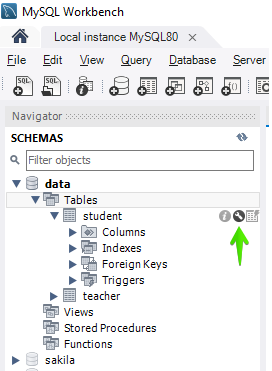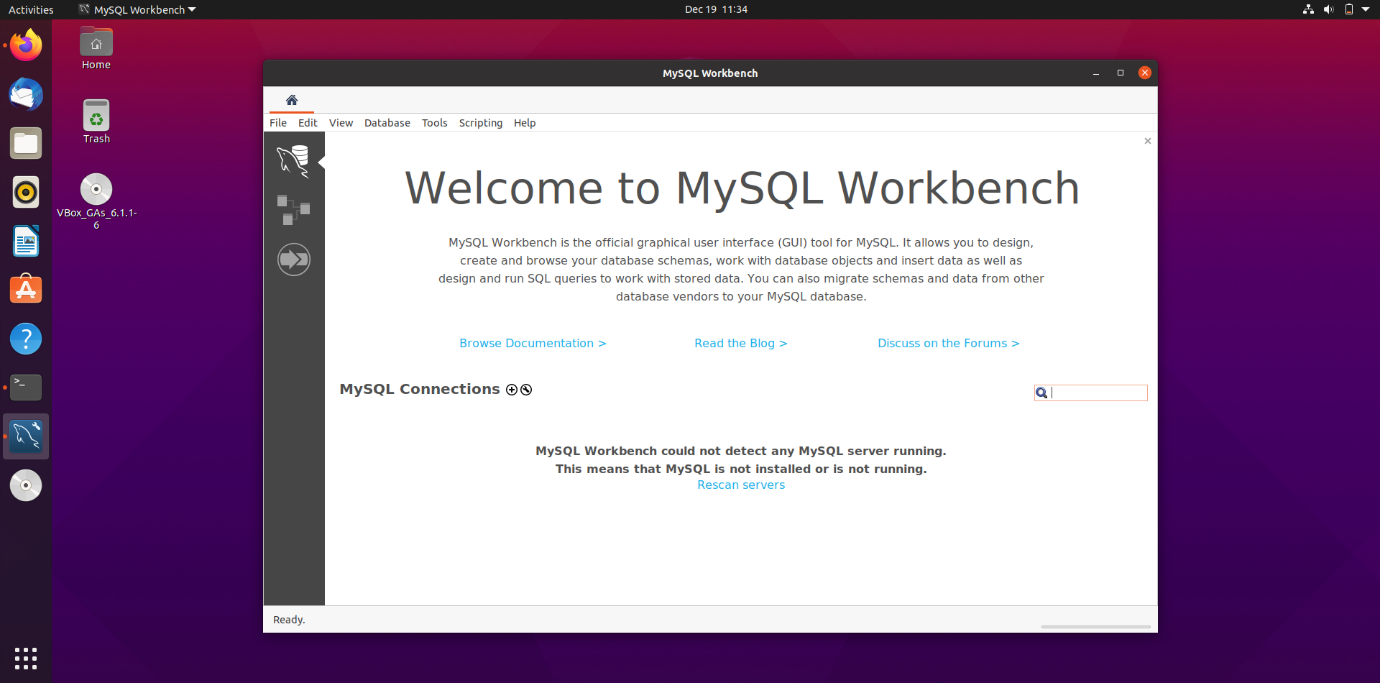

- MYSQL SHOW TABLES IN DATABASE WORKBENCH HOW TO
- MYSQL SHOW TABLES IN DATABASE WORKBENCH PRO
- MYSQL SHOW TABLES IN DATABASE WORKBENCH SOFTWARE

It’s now time to populate that table with some data. Once you do that, you can then select the Datatype for the column ( Figure D).Ĭontinue adding columns until your table is complete. In the new window ( Figure C), name the table.ĭouble-click under Column Name, and you should be able to type the name of the first column. Expand that listing, right-click the Tables entry, and select Create Table. I’ve created a database called SERVERS, that will be listed in the SCHEMAS pane. Once the schema is created, close the SQL Script window. Once you name your schema, click the Apply button and, when prompted, review the SQL Script and click Apply again. In the resulting window ( Figure B), give the schema (database) a name and (if necessary) select a Default Collation. From the database home screen ( Figure A), right-click a blank spot under the SCHEMAS pane and select Create Schema. Open MySQL Workbench and connect to your database server. The first thing to do is create a database (aka Schema). I will assume you already have MySQL Workbench installed.
MYSQL SHOW TABLES IN DATABASE WORKBENCH HOW TO
You need to make sure you have MySQL set up for remote connections ( See: How to set up MySQL for remote access on Ubuntu Server 16.04 (This also works for Ubuntu 18.04). My instance of MySQL Workbench will connect to a MySQL database, housed on Ubuntu Server 18.04. I’ll use MySQL Working 6.3, which has drastically evolved from older versions of the tool.
MYSQL SHOW TABLES IN DATABASE WORKBENCH PRO
SEE: Server deployment/migration checklist (Tech Pro Research) What you need To do so, I’ll walk you through the process of creating a database, adding a table to that database, and then adding data to the table. I’m going to show you just how easy it is to make use of MySQL Workbench.
MYSQL SHOW TABLES IN DATABASE WORKBENCH SOFTWARE
Networking: Must-read coverageīest network monitoring software and tools 2022ĥ programming languages network architects should learn (free PDF)īehind the scenes: A day in the life of a database administratorģ essential productivity-boosting resources for network admins (TechRepublic Premium) It’s cross-platform, open source, and incredibly easy to use. This particular tool is one of the finest locally installed MySQL client tools you’ll find. Fortunately, for those users, there are plenty of GUIs available to make the task easier. To others, however, the command line is too cumbersome to be efficient. To them, it’s as efficient as a work environment can be. MySQL Workbench allows you to easily export or import data by selecting database schemas or tables from the Object Browser.Many database administrators are comfortable working within the command line. You can also view server logs to identify problems quicker and track database changes.You can specify a MySQL hostname to define where to host your MySQL database. MySQL Workbench lets you fine-tune MySQL servers by allowing you to view and edit advanced parameters. View account information of all users on the MySQL server.MySQL Workbench makes user management a lot easier. You can easily navigate between schemas, select tables and fields, create new ones, or drop them. MySQL Workbench’s Object Browser allows you to visually select tables and columns. MySQL Workbench lets you created, manage, and organize database connections. It also lets you configure, schedule, edit, and execute migration projects. It lets you migrate from Microsoft SQL Server, SQLite, Microsoft Access, and many more.


MySQL Workbench eases the process of migration. Performance Reports let you analyze the performance of your databases. The Performance Dashboard gives you a quick view of the different performance metrics. MySQL Workbench offers various tools that let you view and improve performance. It has auto-complete and color highlighters that aid in easily writing and debugging SQL statements. The Visual SQL Editor lets you create, edit, and run queries. It also allows you to execute SQL queries on these connections using the in-built editor. MySQL Workbench allows you to create, manage, and configure your connections and connection parameters to MySQL database servers. You can also create models from a target database or even imported SQL files. You can convert ER diagrams into SQL statements and push them to a SQL server. MySQL Workbench allows you to create and manipulate models, reverse engineer a live database to a model, and create and edit tables and insert data. Modeling is a great way to visualize requirements and creating well-performing databases that can keep up with the ever-evolving data requirements.


 0 kommentar(er)
0 kommentar(er)
